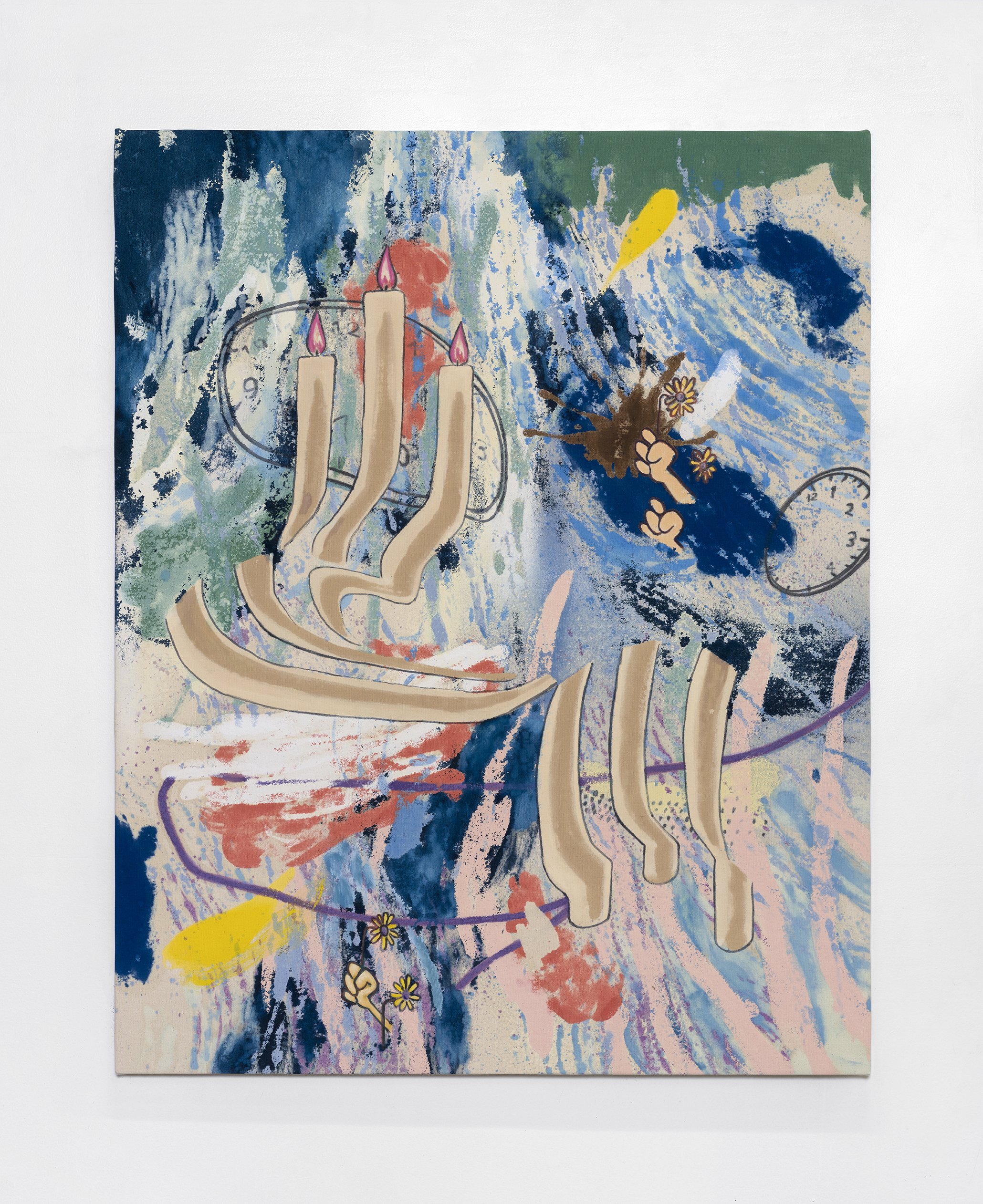
Chris Hood, Novel Gazer, 2023, alkyd on canvas, 127 x 101.6 cm
The title Thought Forms alludes to an influential 1905 book by the same name, in which theosophist Annie Besant describes the visual manifestation of thought itself: “Each definite thought produces a double effect—a radiating vibration and a floating form.” Both elements are present in Hood’s work on opposite sides of the canvas, yet the artist is less concerned with meta-physical than the physical properties of painting itself.
Hood’s application of resin-based paint from behind yields results akin to the soak-stain paintings of the 20th-century; his compositions feature extremely thin layers of pigment that saturate the weft of the canvas. In contrast to other stain painters, thanks to the resistant properties of resin, Hood’s colors do not blend, but rather bloom autonomously alongside and within one another. His approach is a blind, intuitive process, an exquisite corpse in which each brushstroke is hidden by up to a dozen successive layers of paint; these subsequently compressed when viewed from the other side into a single, psychedelic plane. The two thought-form elements of Hood’s paintings—the radiating vibrations and floating forms—together form a psychic and spatial collision, evoking opposing sensations of accumulation and compression, literal and subjective, the image and the imagined.
Janelle Zara
Exhibition views : © Rebecca Fanuele
Artwork photos : © Ruben Diaz






















